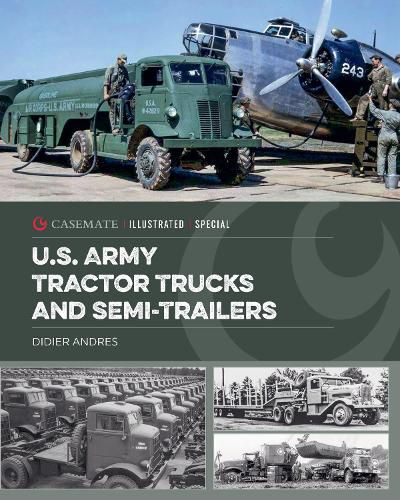Readings Newsletter
Become a Readings Member to make your shopping experience even easier.
Sign in or sign up for free!
You’re not far away from qualifying for FREE standard shipping within Australia
You’ve qualified for FREE standard shipping within Australia
The cart is loading…






In the late 1930s, the U.S. Army began a significant overhaul of its vehicle fleet, shaping the logistics backbone of World War II. Affecting this effort were two major schools of thought regarding logistical support: some experts proposed the trailer or semitrailer, which had a physical separation between the mechanical part of the truck and the rear technical part containing supplies or specialist equipment; opponents encouraged the use of compact and inseparable assemblies to save time in the field. Both types of trucks would be used during World War I, complete trucks intended for the front and its immediate rear, the lines of communications and the staging area being the domain of tractors and semitrailers. This book examines all the different weight categories of tractor trucks and semitrailers used by the U.S. Army during World War II. Illustrated with hundreds of period photographs, illustrations, and diagrams, the text discusses all variants including an array of specialized vehicles for units such as commissary, engineering, aviation, and cavalry. 150 photographs
$9.00 standard shipping within Australia
FREE standard shipping within Australia for orders over $100.00
Express & International shipping calculated at checkout
In the late 1930s, the U.S. Army began a significant overhaul of its vehicle fleet, shaping the logistics backbone of World War II. Affecting this effort were two major schools of thought regarding logistical support: some experts proposed the trailer or semitrailer, which had a physical separation between the mechanical part of the truck and the rear technical part containing supplies or specialist equipment; opponents encouraged the use of compact and inseparable assemblies to save time in the field. Both types of trucks would be used during World War I, complete trucks intended for the front and its immediate rear, the lines of communications and the staging area being the domain of tractors and semitrailers. This book examines all the different weight categories of tractor trucks and semitrailers used by the U.S. Army during World War II. Illustrated with hundreds of period photographs, illustrations, and diagrams, the text discusses all variants including an array of specialized vehicles for units such as commissary, engineering, aviation, and cavalry. 150 photographs